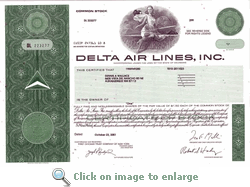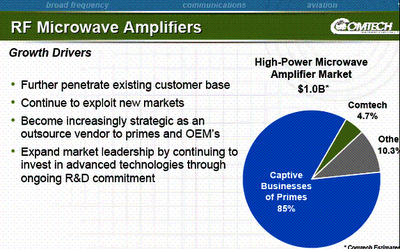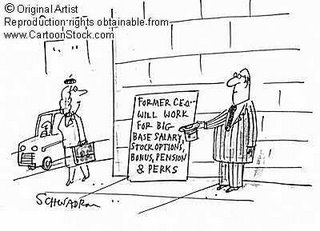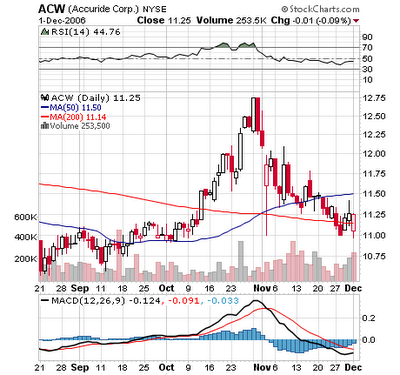
On December 8, 2006, “wheels-on-a-heel" footwear designer Heelys, Inc. (HLYS-$32.74) priced 6.425 million shares at $21, a 23.5% premium to its suggested IPO price of $17.00 per share. Heelys offered 3.125 million shares of common stock and certain existing stockholders sold the remaining 3.3 million shares, with Bear Stearns and Wachovia Securities acted as co-managers for the IPO.
The Company is using the net proceeds from the IPO to repay about $22.0 million in debt outstanding, upgrade its IT systems, and to fund expansion plans, including advertising (television), staff headcount (of 38 employees), and product development.
Shares “heelied” down Wall Street, as investors bid up the stock 55.2% in its first day of trading, excited about the Company’s growth prospects in domestic and international markets
Heelys sells a dual-purpose shoe that has a removable wheel, which allows the user to seamlessly change from walking or running to skating by shifting their weight to the heel. Users can also transform HEELYS-wheeled footwear into comfortable street shoes by removing the wheel.
The footwear, sold under the marketing slogan "Freedom is a wheel in your sole," is targeted to boys and girls between six and fourteen years of age, particularly those who associate themselves with youth action sports.
The wheeled shoes, which retail from $59.99 to $99.99, come in three categories—Single-Wheel, Two-Wheel, and Grind-and-Roll, and in a variety of colors—and can be found at sporting goods retailers, specialty shoe retailers, and select department stores.
Financial Analysis
In the first nine-months of this fiscal year, net sales increased 303.1% to $117.1 million, from $29.1 million for the nine months ended September 30, 2005. Unit sales of HEELYS-wheeled footwear increased by 2.9 million pairs, or 316.2%, to 3.9 million pairs for the nine months ended September 30, 2006.
For the nine months ended September 30, 2006, 85.9% of net sales were from domestic retail customers, as compared with 81.0% for the nine months ended September 30, 2005. Domestic net sales increased $77.1 million, or 327.8%, to $100.6 million for the first nine-months.
Internationally, net sales increased $11.0 million, or 198.2%, to $16.5 million. This increase was primarily the result of increased sales to distributors in Canada, the United Kingdom, Ireland and Argentina/Brazil/Chile, partially offset by decreased sales to distributors in Japan and Spain/Portugal.
As a percentage of net sales, net income increased to 15.1% for the nine months ended September 30, 2006, from 10.0% for the nine months ended September 30, 2005. Net income was $17.7 million, or share-net of $0.70, compared with $2.9 million, or 11 cents per share, last year. This impressive growth was due to higher sales and decreases in product costs (due to product mix and efficiencies related to the opening of a distribution center), partially offset by increased freight costs (primarily caused by airfreight costs to meet rush-past due orders).
For the nine months ended September 30, 2006, cash used in operating activities was $19.5 million compared to $316,000 for the nine months ended September 30, 2005. Cash used in operating activities for 2006 consisted primarily of an increase in net working capital of $37.5 million partially offset by net income of $17.7 million and non-cash items of $279,000. The increase in net working capital was primarily the result of an increase of $36.5 million in accounts receivable due to increased net sales and an increase in inventory of $11.3 million due to an increase in inventory in transit, partially offset by an increase in accrued expenses of $6.6 million and income taxes payable of $4.5 million related to increased income before income taxes.
The increase in net working capital was related to—similar to other vendors of footwear products—the seasonality of sales. There are three major buying seasons in footwear: spring/summer, back-to-school and holiday. Shipments—and the need for higher inventories—for back-to-school generally occur over the summer and shipments for the holiday season begin in October and finish in early December.
Investment Analysis
In our view, at $32.74, or 35 times estimates earnings of $0.94 per share, Heelys’ stock already discounts a strong fourth-quarter.
Heelys run out of the blocks comes on the heels of other strong specialty retailers and sportswear retailers (aimed at the youth market) IPOs in the last two years. Looking at these “lifestyle-trends” peer comparables, however, risk-reward does not favor establishing new positions in Heelys:COMPANY SYMBOL/
PRICE2007
P/EEV/REV
(TTM)Heelys, Inc. (HLYS) 34.8x 5.7 CROCS, Inc. (CROX-$43.53) 21.3x 5.9 Under Armour, Inc. (UA-$50.80) 52.9x 6.2 Zumiez, Inc. (ZUMZ-$29.52) 33.2x 3.05 Volcom, Inc. (VLCM-$29.30) 20.1x 3.30 Note. HLYS -- PE is FY '06/ Enterprise Value/ Revenue (EV/REV) based on 2006 est. of $160.3 mill.
Action & Board sports apparel retailer Volcom illustrates what happens when yellow flags begin to fly. On May 11, 2006, one of Volcom’s largest customers (accounting for about 25% of revenue), casual apparel maker Pacific Sunwear (PSUN-$19.67) announced that same-store sales and net income were lower in its 1Q:06. From May to August, PSUN shed about 30.4% in market value—and in sympathy, Volcom’s stock price dropped about 47.2% in market value!
Heely’s current stock price could look cheap, however, if management executes on its promise to increase domestic distribution by expanding the number of stores in which its wheeled footwear is sold (by existing retail customers and by adding new retail customers). If sales double in 2007 and the Company can continue to throw off net margins of 15%, Healy’s share could increase another 50% in value.
In the coming months, a boost in Heelys’ stock price could come, too, when its underwriters Bear Stearns, Wachovia Capital Markets, JPMorgan and CIBC World Markets—in all likelihood—publish positive research comments.
[Ed. note. Due to the Company’s limited funding at its public inception, management will need to focus its marketing resources on specific regions of the country that management believes will more readily embrace wheeled sports. In our view, with growth comes the need for additional capital to fund the build-out of additional distribution facilities, staffing needs, etc. The Company will probably float a secondary offering in 2007—so who wants to be lead underwriter?]
Other Investment Risks & Considerations
In 2005 and in the nine-month period ended September 30, 2006, Heelys generated approximately 95% and 99% of its net sales, respectively, from HEELYS-wheeled footwear. Management expects to continue to depend upon this single product line for substantially all of its net sales in the foreseeable future. If consumer interest in HEELYS-wheeled footwear or wheeled sports activity products in general declines, the Company would likely experience a significant loss of sales and would be forced to liquidate excess inventories at a discount, which would have a material adverse impact on its business and operations.
Vulnerability Due to Customer Concentration. For the nine months ended September 30, 2006, Journeys and The Sports Authority accounted for 11.6% and 11.0%, respectively, of net sales. Success is contingent upon the willingness and ability of these retail customers to market and sell Heelys products to consumers.
Because Heelys outsources all of its manufacturing to a small number of independent manufacturers, the Company may face challenges in maintaining a sufficient supply of products to meet future demand for its products or experience interruptions in its supply chain.
The Company has commissioned Boss Technical Services, an independent sourcing agent, to help the Company identify and develop relationships with manufacturers of its footwear products (and provides quality inspection, testing, logistics and product development and design assistance).
Manufacturer Bu Kyung Industrial-So. Korea, (owned by one of the owners of Boss Technical Services) produced almost all of HEELYS-wheeled footwear until May 2006. Commencing in May, when demand for HEELYS-wheeled footwear products outstripped the capacity of this independent manufacturer, management used additional independent manufacturers to produce HEELYS-wheeled footwear.
The company faces risks, too, from an increasing number of counterfeit shoes being sold in the U.S. For example, a recent lawsuit against Levy Marketing accuses the company of selling knockoffs of the Heelys to ''kiosk retail outlets in various malls'' throughout the country.
As of September 30, 2006, the Company offered its products internationally through more than 30 independent distributors, each of which has exclusive rights to a designated territory. In 2005, the largest international territories by net sales were Canada, Japan and Spain/Portugal. Since 2004, no country other than the United States has accounted for 10% or more of our net sales.
Management believes that international distribution represents a meaningful growth channel for the Company, but success in developing foreign markets depends on distributors ability to establish relationships with other distributors in new international markets.
The 10Q Detective notes that the Company is having trouble penetrating shoe markets in the Far East (surprise?). For example, a Korean firm sells a one-wheel roller shoe knockoff called “Heatys.”
To defend its patents and intellectual property in the U.S., the Company has filed more than 70 patents and holds the rights to proprietary technology with names like "High-end Grind Shoe Technology" and a wheel suspension system featuring “shock-absorbing springs” in the wheel housing.
In some Asian countries where Heelys has sought patent protection, however, third parties have challenged the validity, enforceability and scope of its patent rights. For example, the Japan Patent Office issuing an opinion in February 2006 that Heely’s Japanese patent was invalid. (The Company has filed a lawsuit with the Intellectual Property High Court in Japan, in June 2006, and plans to file a Trial for Correction in the Japan Patent Office to attempt to overturn the prior opinion).
Additionally, a third party recently commenced a proceeding to invalidate Heely’s patent on the "Roller Shoe" in Taiwan.
There is also product-liability risk. According to published reports, there are Heely bans in many public buildings, malls, school hallways and playgrounds.
In addition, the Boston group World Against Toys Causing Harm Inc. (W.A.T.C.H.) placed Heelys on the top of its annual "10 Worst Toys" list for 2006, citing safety concerns that the wheeled-sneakers are marketed to children who are unprepared for their associated risks.
[Ed. note. On its website, the Company’s disclaimer states: “recommend that anyone who attempts to use HEELYS in any capacity should ALWAYS wear full protective gear, including: helmets, wrist, elbow, and knee pads.” Yet, in a video we watched on the site called “The Rush,” the adult skater wore none of the aforementioned safety gear!]
Look for liability insurance costs to continue to rise with sales.
One rarely mentioned risk--HEELYS-wheeled footwear could become subject to import tariffs in the United States. The U.S. Customs and Border Protection currently classifies the product(s) as a skate, and as such the Company does not pay import duties to the United States. However, many in the House and Senate are calling for trade protection—especially from countries in Asia—as our Trade Deficits balloon (the experts say these deficits are “ capital borrowing from abroad,” approaching 7 percent of GDP.)
If the classification for HEELYS-wheeled footwear changed and HEELYS-wheeled footwear became subject to an import duty (as high as 20 percent ad valorem), it might be difficult to pass these costs—to compensate for any such duty—onto the consumer.
Editor David J Phillips does not hold financial interests in any of the companies mentioned in this posting. The 10Q Detective has a Full Disclosure policy.









